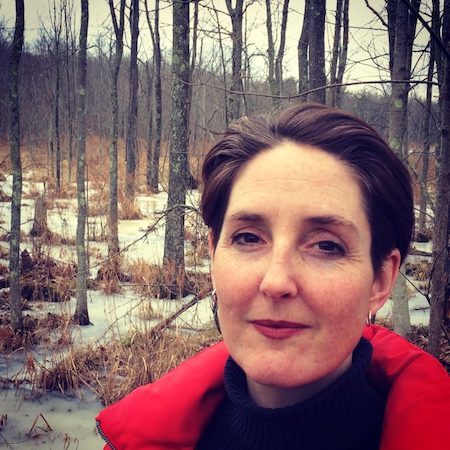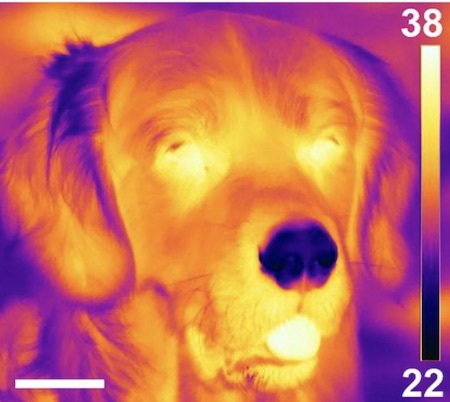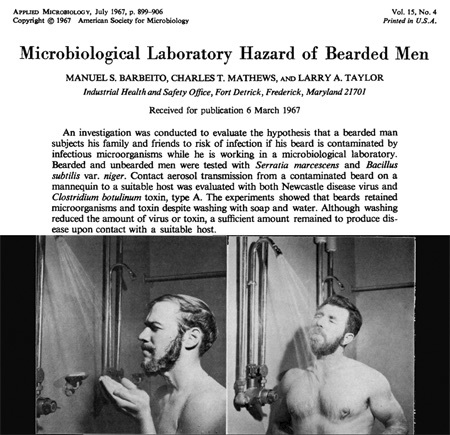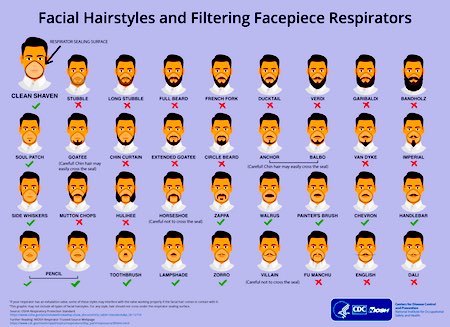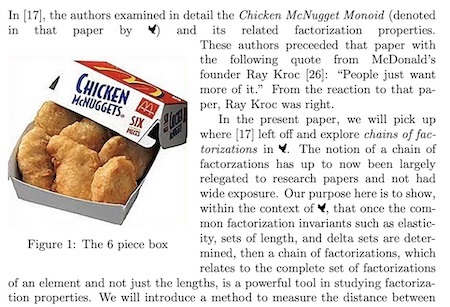Marc Abrahams's Blog, page 124
March 8, 2020
The special Psychology issue—Improbable Research
The special Psychology issue (vol. 26, no. 1) of the magazine oozes reports about improbable research about people’s thinking and behavior.
Perhaps this is the psychologically right moment to subscribe.

March 6, 2020
Skimming Through 11799 Studies for a Minimum Dose of Nature
Ancient advice to students to “get out of the classroom and breath some fresh air” has never been quantified to the satisfaction of people who want to quantify it better. A new study takes a brute-force approach:
“Minimum Time Dose in Nature to Positively Impact the Mental Health of College-Aged Students, and How to Measure It: A Scoping Review,” Genevive R. Meredith, Donald A. Rakow, Erin R. B. Eldermire, Cecelia G. Madsen, Steven P. Shelley, and Naomi A. Sachs [pictured here], Frontiers in Psychology, epub 2020.
The authors, at Cornell University and the University of Maryland, explain what they intended to do, and how they went about trying to do it:
The aim of this study was to define a ‘dose’ of time in nature that could be prescribed to college-age students, as a preventative and supportive mental health and well-being intervention….
Fourteen bibliographic databases were searched and all results were blindly screened using established inclusion criteria…. Initially, 11,799 titles were identified and once de-duplicated, 10,917 titles were screened. One hundred fifty-five papers were given full text reviews, of which 14 studies were included in this review. In summary, 13 of the 14 papers explicitly noted that the participants were college students.

March 4, 2020
Dinner Lecture: Parasitology Club Fecal Lecture and Lab
Today’s Dinner Lecture of the Day is the “Parasitology Club Fecal Lecture and Lab” at Cornell University, at which “Dr. Araceli Lucio-Forster will give a dinner lecture on the principles of veterinary fecal examinations which will be followed by a practical lab in which students will have the opportunity to perform fecals on their pet’s feces”:
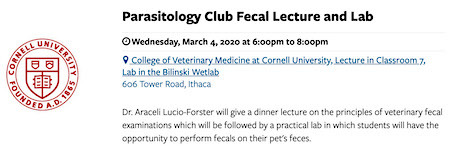 (Thanks to Norm Trigoboff for bringing this to our attention.)
(Thanks to Norm Trigoboff for bringing this to our attention.)

Podcast Episode #205: “Color Preferences in the Insane”
Color Preference in the Insane, Can Consumers Recognize the Taste of their Favorite Beer?, Effect of Audience Boredom on the Power Hungry, You Never Sleep Alone, Improbable Medical Review, Extracting the Wrong Tooth, and Telephones for Animals.
In episode #206, Marc Abrahams shows some unfamiliar research studies to Jean Berko Gleason, Chris Cotsapas, Maggie Lettvin, Richard Baguley, and Melissa Franklin. Dramatic readings and reactions ensue.
Remember, our Patreon donors, on most levels, get access to each podcast episode before it is made public.
1. Jean Berko Gleason encounters:
Siegfried E. Katz, (1931). ‘Color Preference in the Insane.’ Journal of Abnormal and Social Psychology 26 (2): 203–11.
2. Chris Cotsapas encounter:
“Probably Not the Best Lager in the World: Effect of Brands on Consumers’ Preferences in a Beer Tasting Experiment,” Matteo Maria Galizzi and Christian Garavaglia, Liuc Papers in Economics, no. 254, Serie Economia e Impresa, vol. 65, October 2012.
3. Jean Berko Gleason encounters:
Fodor, Eugene M., and David P. Wick (2009). ‘Need for Power and Affective Response to Negative Audience Reaction to an xtemporaneous Speech.’ Journal of Research in Personality 43: 721–26.
4. Maggie Lettvin encounters:
Van Bronswijk, J. E. M. H. (1994). ‘A Bed Ecosystem.’ Lecture Abstracts – 1st Benelux Congress of Zoology, Leuven, 4–5 November.
Solarz, Krzysztof (1997). ‘Seasonal Dynamics of House Dust Mite Populations in Bed/Mattress Dust from Two Dwellings in Sosnowiec (Upper Silesia, Poland): An Attempt to Assess Exposure.’ Annals of Agricultural and Environmental Medicine 4: 253–61.
Sesay, H. R., and R. M. Dobson (1972). ‘Studies on the Mite Fauna of House Dust in Scotland with Special Reference to that of Beddings.’ Acarologia 14: pp. 384–92.
”Morphological adaptation for precopulatory guarding in astigmatic mites (Acari: Acaridida),” Wojciech Witaliński, Jacek Dabert and Manfred G. Walzl, International Journal of Acarology, vol. 18, no. 1, 1992, pp. 49-54.
5. Richard Baguley encounters:
“A Unique Case of Human Ophthalmic Acariasis Caused by Orthohalarachne attenuata (Banks, 1910) (Acari: Halarachnidae),” James P. Webb, Jr., Deane P. Furman, and Samuel Wang, Journal of Parasitology, vol. 71, no. 3, June 1985, pp. 388–9
“Medical Training as Adventure-Wonder and Adventure-Ordeal: A Dialogical Analysis of Affect-Laden Pedagogy,” Anne Madill and Paul Sullivan, Social Science and Medicine, vol. 71, 2010, pp. 2195–203.
6. Jean Berko Gleason encounters:
“The Case of the Wrong Tooth,” Laurance Jerrold and Mary Romeo, American Journal of Orthodontics and Dentofacial Orthopedics, vol. 100, no. 4, October 1991, pp. 376–81.
“Ethics Case Analysis: The Extraction of the Wrong Tooth,” Gary Chiodo, Susan Tolle, and Laurance Jerrold, American Journal of Orthodontics and Dentofacial Orthopedics, vol. 114, no. 6, 1998, pp. 721–3.
“Effectiveness of an Educational Program in Reducing the Incidence of Wrong-Site Tooth Extraction,” Hao-Hueng Chang, Jang-Jaer Lee, Shih-Jung Cheng, Puo-Jen Yang, Liang-Jiunn Hahn, Ying-Shiung Kuo, Wan-Hong Lan, and Sang-Heng Kok, Oral Surgery, Oral Medicine, Oral Pathology, Oral Radiology, and Endodontology, vol. 98, no. 3, 2004, pp. 288–94.
“Wrong Tooth Extraction: Root Cause Analysis,” Oren Peleg, Navot Givot, Tali Halamish-Shani, and Shlomo Taicher, Quintessence International, vol. 41, no. 10, November–December 2010, pp.869–72.
“Experience of Wrong-Site Tooth Extraction Among Nigerian Dentists,” Wasiu L. Adeyemo, Olabisi H. Oderinu, Akanbi C.O. Olojede, Azeez A. Fashina., and Adeshina O.S. Ayodele, Saudi Dental Journal, vol. 23, no. 3, 2011, pp.153–6.
7. Melissa Franklin encounters:
“Domestic animal telephone“, US patent granted to Mark W. Kroll, # 7654230, granted February 2, 2010.
Bruce Petschek, Audio Engineer
John Shedler, Audio Engineer
Seth Gliksman, Production Assistant
Available on Spotify, Apple Podcasts, Overcast, Google Podcasts, AntennaPod, BeyondPod and elsewhere!

The Deposition of Airborne Droplets on Dead House-flies [study]
 When it comes to the question of the optimum droplet diameter for deposition on dead flies (in woodland), there aren’t many pertinent research papers. Possibly only one. A 2009 study from R. T. Jarman of Chesterford Park Research Station, UK, recounts attempts, by experiment, to find out.
When it comes to the question of the optimum droplet diameter for deposition on dead flies (in woodland), there aren’t many pertinent research papers. Possibly only one. A 2009 study from R. T. Jarman of Chesterford Park Research Station, UK, recounts attempts, by experiment, to find out.
“An experimental laboratory study of the deposition of droplets on dead house-flies (Musca domestica L.) was made, using a spinning-top sprayer to produce a spray of uniformly sized oil droplets and a cascade impactor to measure the concentration of the spray of droplets, which were dyed. The deposits obtained on a dead house-fly and a cascade-impactor slide when these were exposed in turn to a wind of 1 m. per sec. in a wind tunnel were compared colorimetrically, and determinations thus made of the collection efficiency of the flies, defined as the volume of liquid deposited on an object expressed as a percentage of the volume that would have passed through the same cross-section as the object had that not been there.”
The answer, it turned out, is around 20–40μ. See: The Deposition of Airborne Droplets on dead House-flies (Musca domestica L.) in the Bulletin of Entomological Research, Volume 50, Issue 2, August 1959 , pp. 327-332
Creative Commons photo courtesy Ismael Villafranco, on flickr

March 2, 2020
Dog Nose-Tip Temperature Dynamics and Distant-Heat Sensing Ability
“Why do dogs have cold noses?” wonder many humans who, most of them, have warmer noses than dogs have. Here are two research studies by Ronald H.H. Kroger and colleagues, that sniffed into the question and may have found some answers.
Dog Nose-Tip Distant-Heat Sensing Ability?
“Dogs Can Sense Weak Thermal Radiation,” Anna Bálint, Attila Andics, Márta Gácsi, Anna Gábor, Kálmán Czeibert, Chelsey M Luce, Ádám Miklósi, and Ronald H.H. Kröger, Scientific Reports, vol. 10, no. 1, 2020, 3736.
The authors, at Lund University, Sweden; Eötvös Loránd University, Hungary; and University of Bremen, Germany, explain:
“The dog rhinarium (naked and often moist skin on the nose-tip) is prominent and richly innervated, suggesting a sensory function. Compared to nose-tips of herbivorous artio- and perissodactyla, carnivoran rhinaria are considerably colder. We hypothesized that this coldness makes the dog rhinarium particularly sensitive to radiating heat. We trained three dogs to distinguish between two distant objects based on radiating heat; the neutral object was about ambient temperature, the warm object was about the same surface temperature as a furry mammal. In addition, we employed functional magnetic resonance imaging on 13 awake dogs, comparing the responses to heat stimuli of about the same temperatures as in the behavioural experiment…. Our results demonstrate a hitherto undiscovered sensory modality in a carnivoran species.”
Dog Nose-Tip Temperature Dynamics
“Rhinarium Temperature Dynamics in Domestic Dogs,“, Ronald Heinz Herbert Kröger and Aitor Bereber Goiricelaya, Journal of Thermal Biology, vol. 70, Part B, December 2017, pp. 15-19. The authors, at Lund University, Sweden, report:
“The rhinaria of adult, alert, and comfortable dogs are colder than ambient temperature from 30 °C (approximately 5 °C colder) down to a break point at about 15 °C. At an ambient temperature of 0 °C, rhinarium temperature is approximately 8 °C and the decrease in skin surface temperature with decreasing ambient temperature has not yet leveled off. The dog rhinarium warms up under a number of circumstances. In contrast to the continuously warm rhinaria of herbivores, our results suggest strongly that the cold state is the operating state of the dog rhinarium.”
Words to Remember, and Use
We suggest that you memorize that final, stirring phrase from the temperature dynamics paper— and recite the phrase in any meeting you attend, on any subject, when the meeting has reached its moment of maximum dullness: “our results suggest strongly that the cold state is the operating state of the dog rhinarium.”

March 1, 2020
Updated Ig Nobel Euro (and Brexitannia) Tour Schedule
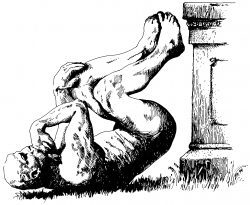 Here’s the updated schedule for the 2020 Ig Nobel Euro (and Brexitannia) Tour, running through most of March and April: <https://tinyurl.com/vtp5d5z>
Here’s the updated schedule for the 2020 Ig Nobel Euro (and Brexitannia) Tour, running through most of March and April: <https://tinyurl.com/vtp5d5z>
Milano postponed
We have indefinitely postponed (thanks, Corona virus travel complications!) the events that were planned for Milan, Italy.
Extra events in the UK and northern Europe?
The schedule now has two slots open for additional simple events (Marc Abrahams doing a talk about the Ig Nobel Prizes):
in England/Scotland/Wales on March 12, 13, 14, or 15
in Germany / The Netherlands / Denmark on April 8, 9, 10, or 11.
If you would like to host an Ig Nobel talk, and have a budget for train travel and some sort of honorarium, please email .
Thanks!

February 28, 2020
Scientists barked like dogs at toads to make them pee
Scientists barked like dogs at toads to make them pee in order to save the species from extinction, according to an Associated Press report by Dánica Coto:
1st in vitro Puerto Rico crested toad gives scientists hope
…Extracting semen from toads that measure up to 4.5 inches (11 centimeters) long is normally easy: they release it in their urine, and they usually pee whenever they’re picked up, Barber [Diane Barber, pictured here, ectotherms curator at the Fort Worth Zoo in Texas] said. But for those toads that did not pee, another tactic was used.
“It’s kind of weird, but if you hold them in your hand and look at them and bark at them like a dog, they will pee,” she said.
(Thanks to Eris Caffee for bringing this to our attention, in vivid wording.)

February 26, 2020
Is Facial Hair Biologically-Hazardous When a Pandemic Looms?
As a newly discovered corona virus spreads through an increasingly anxious world, advice is being given—and sometimes mocked—about the mundane-seeming question of facial hair. The basic safety question was investigated more than fifty years ago—and that investigation was honored ten years ago with an Ig Nobel Prize.
Also: Today the Trump administration took a new step—in selecting a leader for its corona-virus-related research and response efforts—that falls in line with another, very different, Ig Nobel-Prize-winning achievement.
The Prize for Investigating the Biological Hazard of Facial Hair
The 2010 Ig Nobel Prize for public health was awarded to Manuel Barbeito, Charles Mathews, and Larry Taylor of the Industrial Health and Safety Office, Fort Detrick, Maryland, USA, for determining by experiment that microbes cling to bearded scientists.
The team described its finding in the study: “Microbiological Laboratory Hazard of Bearded Men,” Manuel S. Barbeito, Charles T. Mathews, and Larry A. Taylor, Applied Microbiology, vol. 15, no. 4, July 1967, pp. 899–906. Those findings, we have been told, then formed the basis of safety regulations adopted by biological-hazard laboratories around the world.
Here are some details from that study:
Trump Administration Withholds Funds from Fort Detrick Lab—and Appoints Well-Coiffed Leader of Corona Virus Research & Response
The Frederick News-Post reported, on February 5, 2020: “Defense Department withholds money from Fort Detrick lab“. Fort Detrick is where the original are-beards-hazardous research was done. The news report says: “It is unclear why the Defense Department is withholding the $104 million from the U.S. Army Medical Research Institute of Infectious Diseases and the U.S. Army Medical Research Institute of Chemical Defense…”
This new paring of biomedical resources—resources directly aimed at handling infectious diseases— is happening two years after the Trump Administration shut down the CDC’s Pandemic Response team.
Beards, of course, are just one small aspect of this increasingly hairy public health situation.
The Trump administration announced, today, that it is placing an amateur disease enthusiast in charge of the USA’s entire effort to deal with the new disease: “Trump puts Pence in charge of US coronavirus response.” Pence is Mike Pence, Vice President of the United States, who is renowned for his carefully combed hair. Pence is also renowned being the current chairman of the National Space Council and for his recent appointment to head the new US Space Force. In a previous job, as governor of the state of Indiana, Pence was appreciated for his efforts that helped spread the HIV virus.
Pence’s scientifical duties lie squarely in a tradition established thirty years ago, a tradition that was itself honored with an Ig Nobel Prize. The 1991 Ig Nobel Prize for education was awarded to then US Vice President (and first chairman of the National Space Council, ) J. Danforth Quayle, for demonstrating, better than anyone else, the need for science education. Quayle, like Pence, was noted for having well-combed hair.
(The Trump administration honored another Ig Nobel Prize winner just a week ago, when it pardoned Michael Milken, the recipient of the very first Ig Nobel Prize for economics.)
Laughter and Thought
The Ig Nobel Prizes, including the prize awarded a decade ago for the beards research, honor things that make people LAUGH, then THINK.
Some reactions to what’s happening, some of them fanned by much-spun news coverage, illustrate a very different approach to surprising information: LAUGH, then DON’T THINK. Here’s an example of that.
CDC Recommends Precautions About Facial Hair, as the Virus Spreads
As man people contemplate the prospect of wearing face masks, the CDC is providing information and guidance, beginning with an attention-inviting poster:
The immediate reaction, from some people, has been to mock the poster and the advice, and mock even the idea of asking questions.

Factorizations in the Chicken McNugget monoid
A new study serves up new nuggets of mathematical insight from Chicken McNuggets:
“Distances between factorizations in the Chicken McNugget monoid,” Scott Chapman, Pedro Garcia-Sanchez, Christopher O’Neill, arXiv 1912.04494v1, 2019.
The authors explain:
We use the Chicken McNugget Monoid to demonstrate various factorization properties related to relations and chains of factorizations. We study in depth the catenary and tame degrees of this monoid….
So what is the Chicken McNugget Monoid? We briefly review some background material… Chicken McNuggets were originally sold in packages of size 6, 9, or 20 pieces, and the question of how many Chicken McNuggets can be bought without breaking apart a package became a popular recreational mathematics question. More specifically…
(Thanks to Mason Porter for bringing this to our attention.)

Marc Abrahams's Blog
- Marc Abrahams's profile
- 14 followers



